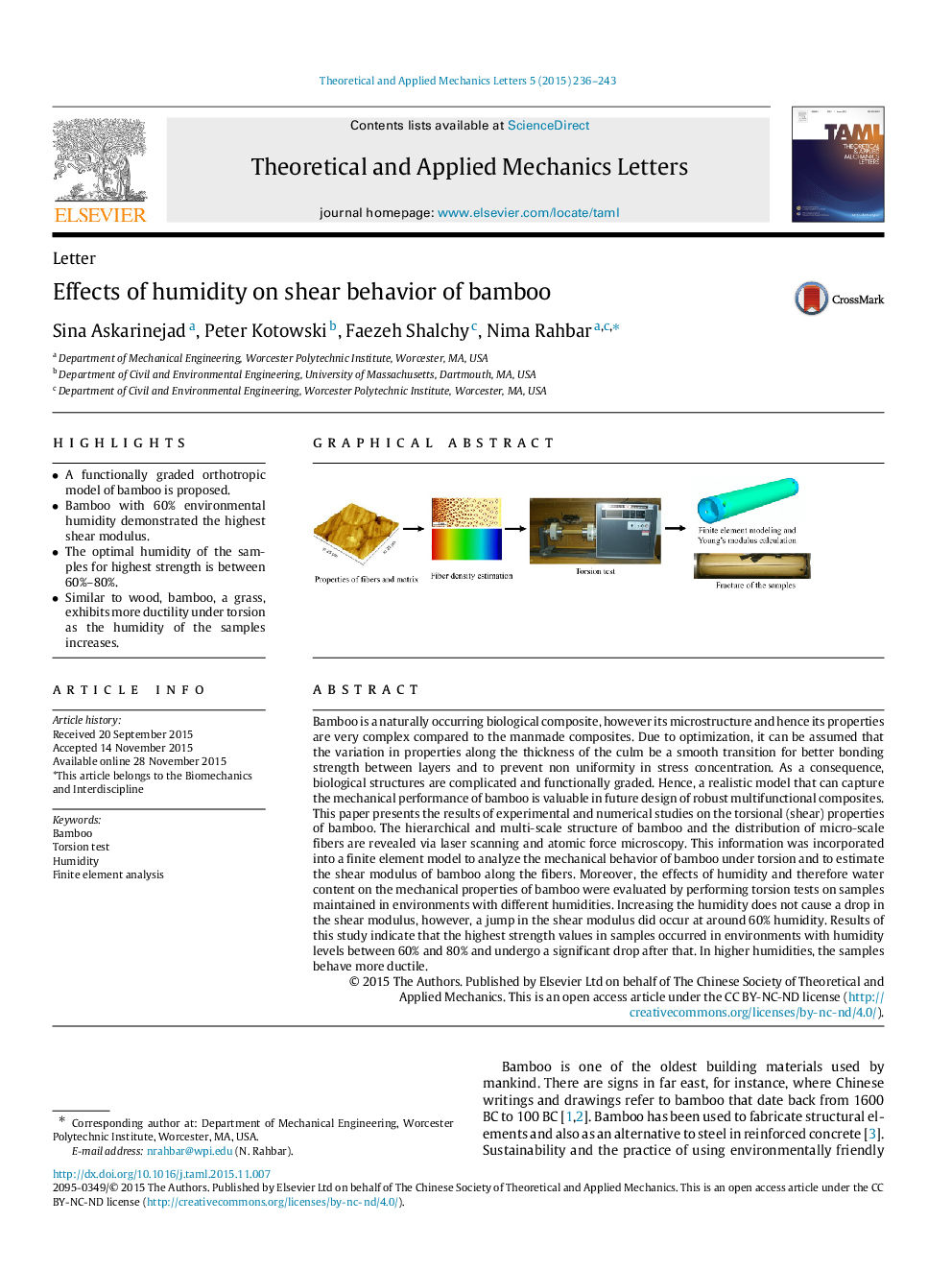| Article ID | Journal | Published Year | Pages | File Type |
|---|---|---|---|---|
| 805555 | Theoretical and Applied Mechanics Letters | 2015 | 8 Pages |
•A functionally graded orthotropic model of bamboo is proposed.•Bamboo with 60% environmental humidity demonstrated the highest shear modulus.•The optimal humidity of the samples for highest strength is between 60%–80%.•Similar to wood, bamboo, a grass, exhibits more ductility under torsion as the humidity of the samples increases.
Bamboo is a naturally occurring biological composite, however its microstructure and hence its properties are very complex compared to the manmade composites. Due to optimization, it can be assumed that the variation in properties along the thickness of the culm be a smooth transition for better bonding strength between layers and to prevent non uniformity in stress concentration. As a consequence, biological structures are complicated and functionally graded. Hence, a realistic model that can capture the mechanical performance of bamboo is valuable in future design of robust multifunctional composites. This paper presents the results of experimental and numerical studies on the torsional (shear) properties of bamboo. The hierarchical and multi-scale structure of bamboo and the distribution of micro-scale fibers are revealed via laser scanning and atomic force microscopy. This information was incorporated into a finite element model to analyze the mechanical behavior of bamboo under torsion and to estimate the shear modulus of bamboo along the fibers. Moreover, the effects of humidity and therefore water content on the mechanical properties of bamboo were evaluated by performing torsion tests on samples maintained in environments with different humidities. Increasing the humidity does not cause a drop in the shear modulus, however, a jump in the shear modulus did occur at around 60% humidity. Results of this study indicate that the highest strength values in samples occurred in environments with humidity levels between 60% and 80% and undergo a significant drop after that. In higher humidities, the samples behave more ductile.
Graphical abstractFigure optionsDownload full-size imageDownload as PowerPoint slide
